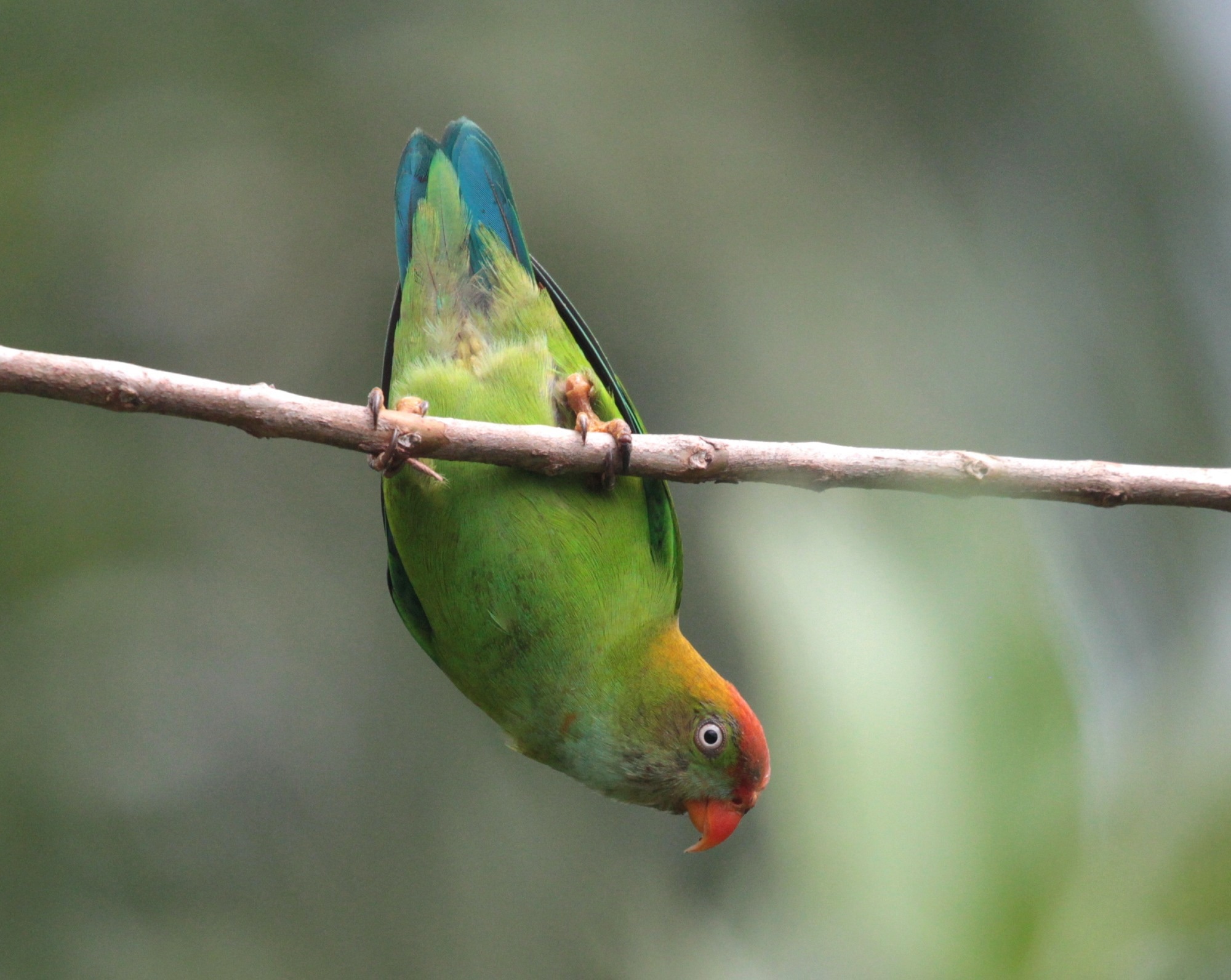Reviewed by Danielle Ellis, B.Sc.Sep 5 2023
A consistent pattern of species abundance has been seen in nature during the past 100 years: Only a few species are extremely frequent, while the majority of species are unusual but not exceedingly rare. Some closely watched species groups, like birds, have seen the full extent of these so-called global species abundance distributions.
 The Sri Lanka Hanging-Parrot (Loriculus beryllinus) lives only in Sri Lanka. It is globally a very rare species, meaning there are few individuals. Image Credit: Corey Callaghan
The Sri Lanka Hanging-Parrot (Loriculus beryllinus) lives only in Sri Lanka. It is globally a very rare species, meaning there are few individuals. Image Credit: Corey Callaghan
The findings were published in the journal Nature Ecology and Evolution by an international team of researchers led by the German Centre for Integrative Biodiversity Research (iDiv), Martin Luther University Halle-Wittenberg (MLU), and the University of Florida (UF). The study highlights the importance of biodiversity monitoring in detecting species abundances and understanding how they fluctuate on Earth.
“Who can explain why one species has a wide range and is very numerous, and another allied species has a narrow range and is rare?” Charles Darwin posed this topic in his seminal work “The Origin of Species,” which was released almost 150 years ago. A similar difficulty has been determining how many species are common (many) and how many are uncommon, referred to as the global species abundance distribution (gSAD).
In the recent century, two major gSAD models have been developed: R. A. Fisher, a statistician and biologist, claimed that most species are extremely uncommon and that the number of species drops for more frequent species (so-called log-series model).
F. W. Preston, an engineer and ecologist, on the other hand, believed that only a few species are truly uncommon, and that most species have an intermediate degree of commonness (so-called log-normal model). Scientists were not sure which model described the planet’s real gSAD until now, despite decades of investigation.
Large volumes of data are required to solve this challenge. The researchers acquired data from the Global Biodiversity Information Facility (GBIF) covering over 1 billion species sightings in nature from 1900 to 2019.
The GBIF database is an amazing resource for all sorts of biodiversity related research, particularly because it brings together both data collected from professional and citizen scientists all over the world.”
Dr Corey Callaghan, Assistant Professor, Wildlife Ecology and Conservation, University of Florida
Callaghan and his colleagues classified the downloaded data into 39 species groupings, such as birds, insects, and mammals. They produced the global species abundance distribution (gSAD) for each.
The researchers discovered a possibly universal pattern that would become apparent after the species abundance distribution is completely revealed: As expected by the log-normal model, most species are unusual but not extremely rare, while just a few are extremely frequent.
However, the researchers discovered that the curtain has only been lifted completely for a few species’ groupings, such as cycads and birds. Data for the other species groupings are currently lacking.
If you don’t have enough data, it looks as though most species are very rare. But by adding more and more observations, the picture changes. You start seeing that there are, in fact, more rare species than very rare species. You can see this shift for cycads and birds when comparing the species observations from back in 1900, when less data was available, with the more comprehensive species observations we have today. It is fascinating: we can clearly see the phenomenon of unveiling the full species abundance distribution, as predicted by Preston several decades ago, but only now demonstrated at the scale of the entire planet.”
Henrique Pereira, Study Senior Author and Research Group Head, iDiv
Callaghan added, “Even though we have been recording observations for decades, we have only lifted the veil for a few species’ groups. We still have a long way to go. But GBIF and the sharing of data really represents the future of biodiversity research and monitoring, to me.”
The findings of the current study allow scientists to judge how far the gSADs have been revealed for different animal groupings. This enables researchers to solve another long-standing research question: how many species are there? This study discovered that, while virtually all species of certain groups, such as birds, have been recognized, this is not the case for other taxa, such as insects and cephalopods.
The researchers hope their findings will aid in resolving Darwin’s query of why certain species are uncommon while others are widespread. The uniform pattern they discovered might lead to broad ecological or evolutionary factors that determine species commonness and rarity. While more study is being conducted, people are continuing to affect the planet’s surface and species abundance, for example, by making common species less prevalent.
This complicates the researchers’ work since they must understand not only how species abundances change naturally, but also how human effects affect these patterns at the same time. It might be a long time before Darwin’s query is eventually solved.
Source:
Journal reference:
Callaghan, C. T., et al. (2023). Unveiling global species abundance distributions. Nature Ecology and Evolution. doi.org/10.1038/s41559-023-02173-y